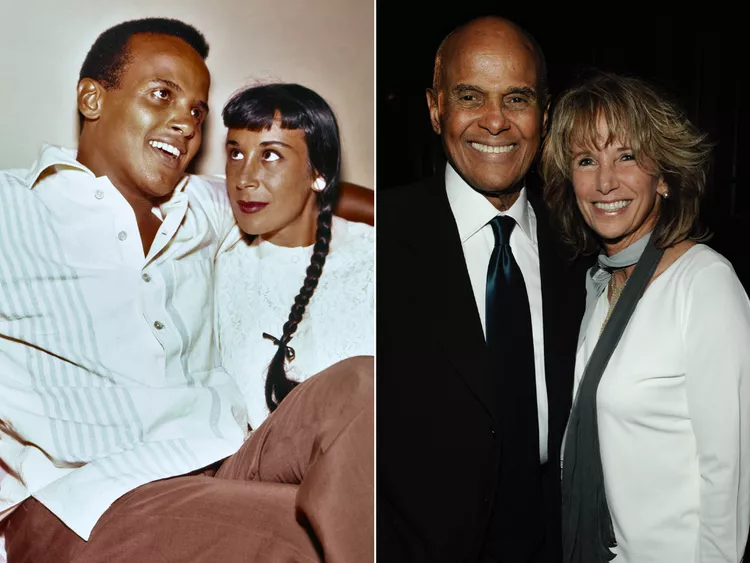Although long recognized as a major force in American dance, Katherine Dunham is less a household name than some of her contemporaries such as Martha Graham or George Balanchine. Nonetheless, her creative influence is just as profound. In addition to her theatrical career, Dunham did pioneering work in the field of dance anthropology and founded a school that embodied multi-cultural principles decades before the term was used in the field of education.

Born in 1909 in Chicago, Katherine Dunham is an American dancer-choreographer who is best known for incorporating African American, Caribbean, African, and South American movement styles and themes into her ballets. As a young dancer and student at the University of Chicago, she chose anthropology as her course of study. The union of dance and anthropology would have a profound impact on her choreographic style throughout her career.
Mrs. Alfred Rosenwald of the Julius Rosenwald Fund attended one of Dunham’s dance concerts (some say at the urging of Erich Fromm, a friend and mentor of Dunham’s at the University of Chicago) and became fascinated with the young dancer’s ideas about dance and its potential for understanding other cultures. As a result, Dunham was awarded a Rosenwald Fund Fellowship to study the dance forms of the Caribbean under the aegis of the University of Chicago’s anthropology department and Melville J. Herskovits, head of the anthropology department at Northwestern University. Thus began Dunham’s historic journey in American dance.
Dunham’s original goal was to analyze the dances of the Caribbean, but she soon recognized that this was much too extensive a task for one trip. Her revised agenda included a stop in Jamaica to study a Maroon village, which resulted in her first book, Journey to Accompong. This was followed by visits to several other islands before her arrival in Haiti where she stayed for nine months. Her work in Haiti resulted in her thesis, “The Dances of Haiti: Their Social Organization, Classification, Form, and Function” and another book, Island Possessed. These pioneering dance/anthropology works were significant first steps toward the now recognized sub discipline of dance anthropology. But of even more significance was the effect Dunham’s fieldwork had on her own artistic development. During her time in Haiti, Dunham came to understand–both intellectually and kinesthetically–the African roots of black dance in the West Indies. From this physical understanding of what she considered her cultural roots, Dunham began to develop the first African American concert dance technique.
Upon her return to the United States, Dunham went to New York to perform and choreograph this new type of African American dance. To do so meant leaving the academic arena behind; still, she continued to approach her choreographic work from the perspective of an anthropologist.
Dunham’s choreographic approach was to select certain movement motifs and then adapt, expand, and abstract them until they became her own artistic statement. Dunham also applied the same methods to the subject of her dances. She might glean an idea from a specific ritual event; but she always retained an attachment to the original cultural context from which the movement or idea sprang. This process resulted in an extremely theatrical production, yet one that maintained links to ritually-charged cultural events. This link to ritual most likely was part of what made the dances so moving to audiences.
Caption for image on right: Katherine Dunham and student at Southern Illinois University, c.1960s. Courtesy of Special Collections Research Center, Morris Library, Southern Illinois University, Carbondale.

Dunham’s choreography and performing company were extremely well received in New York. Her success led to more diverse opportunities, including Broadway performances, feature films, choreography, and national and international tours presented by Sol Hurok (a leading theatrical impresario of the period).
In the mid 1940’s, Dunham returned to New York and opened the Dunham School of Dance and Theatre, the first of many Dunham schools. In 1946, the school was expanded and renamed the Katherine Dunham School of Arts and Research. The school’s interdisciplinary curriculum was considered radical at the time and remains unique today. The following list of courses taught at the school is clearly a curriculum developed by an anthropologist: general anthropology, introductory psychology, scientific method and logic, ballet, modern dance, dance notation, history of drama, and Caribbean folklore.
Dunham continued to tour extensively from the late 1940s through the early 1960s. She choreographed for film and television, and she opened schools in Paris, Stockholm, and Rome. She then returned to Haiti to live, research, and write. In 1964 she became an artist-in-residence at Southern Illinois University where she subsequently became professor and director of the Performing Arts Training Center. In 1983, she was a recipient of the Kennedy Center Honors, and in 2000, she was named one of “America’s Irreplaceable Dance Treasures: the first 100” by the Dance Heritage Coalition. She has continued to teach the Dunham technique to young dancers at the Dunham Centers in East Saint Louis, where she brings an awareness of Caribbean and African art to area residents.
Dunham has done what every artist dreams of–she created a new art form. Drawing upon her early fieldwork, she refined her methodology through years of performing and choreographing, and ultimately produced a product: African American dance. She has transmitted both a technique and a body of knowledge to succeeding generations of dance students.
When asked how she would describe the significance of her work, Dunham said, “It has always seemed to me that in the final analysis it is not the investigation and recording of field material that is important, but rather some practical tangible evidence of its use and translation.” That tangible evidence is apparent in Dunham’s work and in the work of her students.





